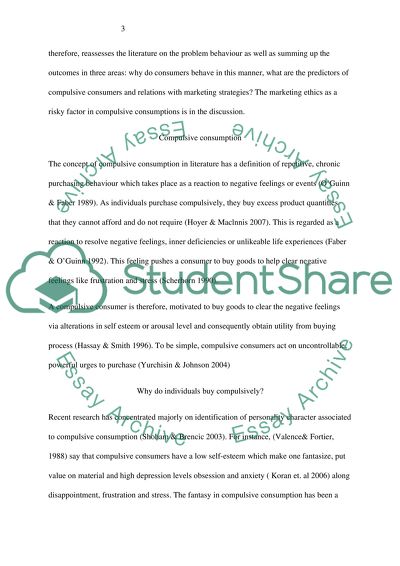Cite this document
(Compulsive Consumption Literature review Example | Topics and Well Written Essays - 2250 words - 3, n.d.)
Compulsive Consumption Literature review Example | Topics and Well Written Essays - 2250 words - 3. Retrieved from https://studentshare.org/marketing/1492081-literature-review
Compulsive Consumption Literature review Example | Topics and Well Written Essays - 2250 words - 3. Retrieved from https://studentshare.org/marketing/1492081-literature-review
(Compulsive Consumption Literature Review Example | Topics and Well Written Essays - 2250 Words - 3)
Compulsive Consumption Literature Review Example | Topics and Well Written Essays - 2250 Words - 3. https://studentshare.org/marketing/1492081-literature-review.
Compulsive Consumption Literature Review Example | Topics and Well Written Essays - 2250 Words - 3. https://studentshare.org/marketing/1492081-literature-review.
“Compulsive Consumption Literature Review Example | Topics and Well Written Essays - 2250 Words - 3”, n.d. https://studentshare.org/marketing/1492081-literature-review.


